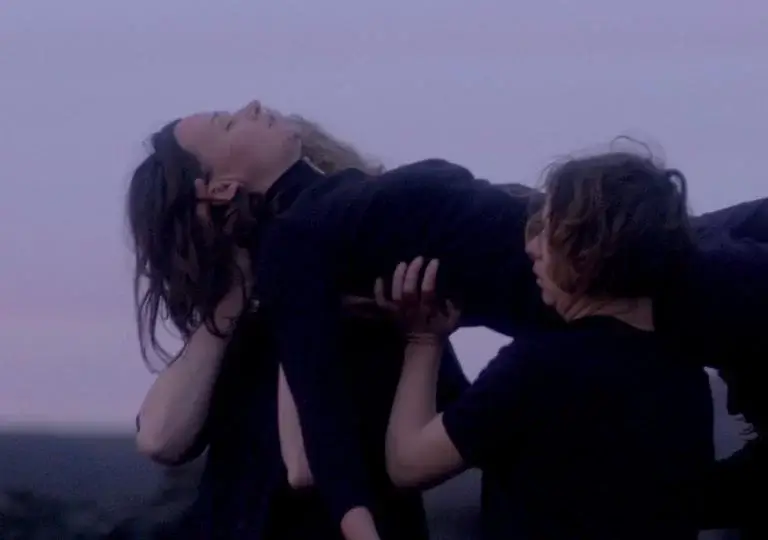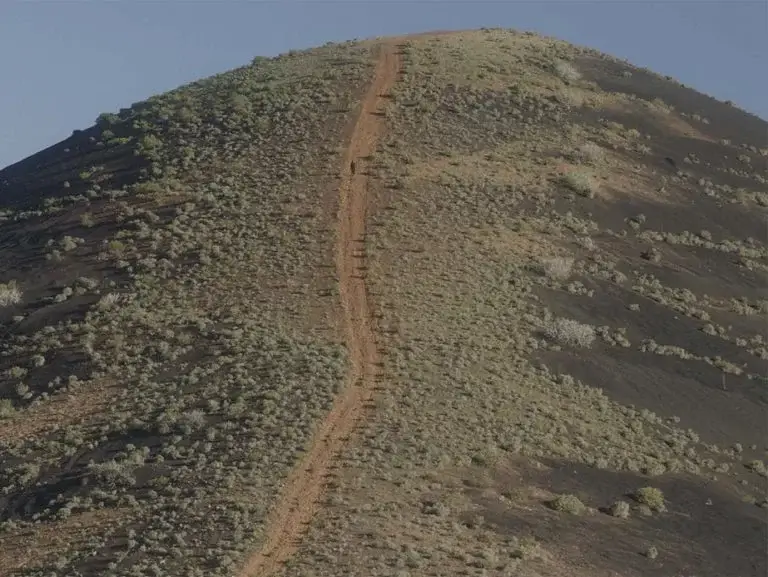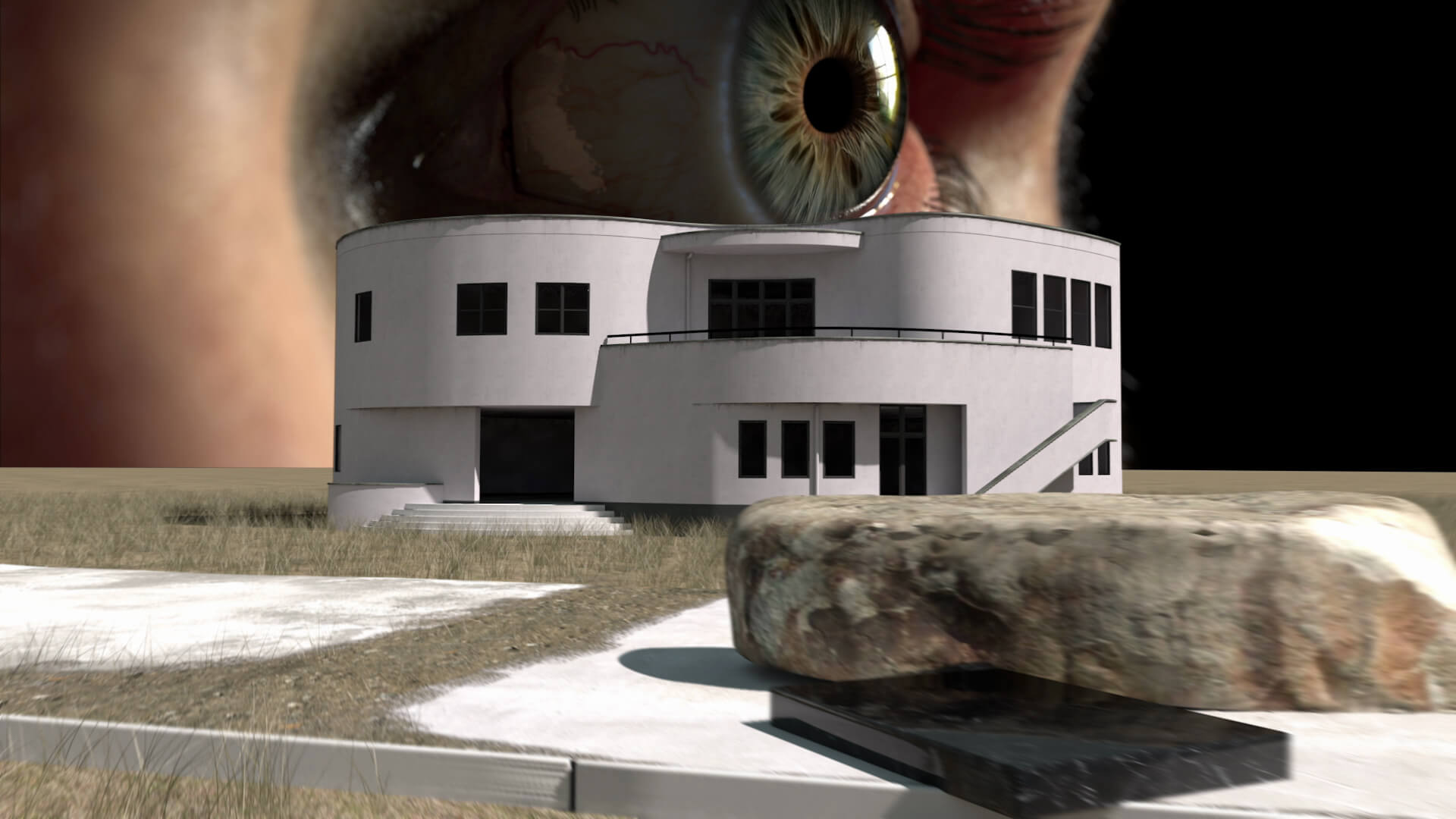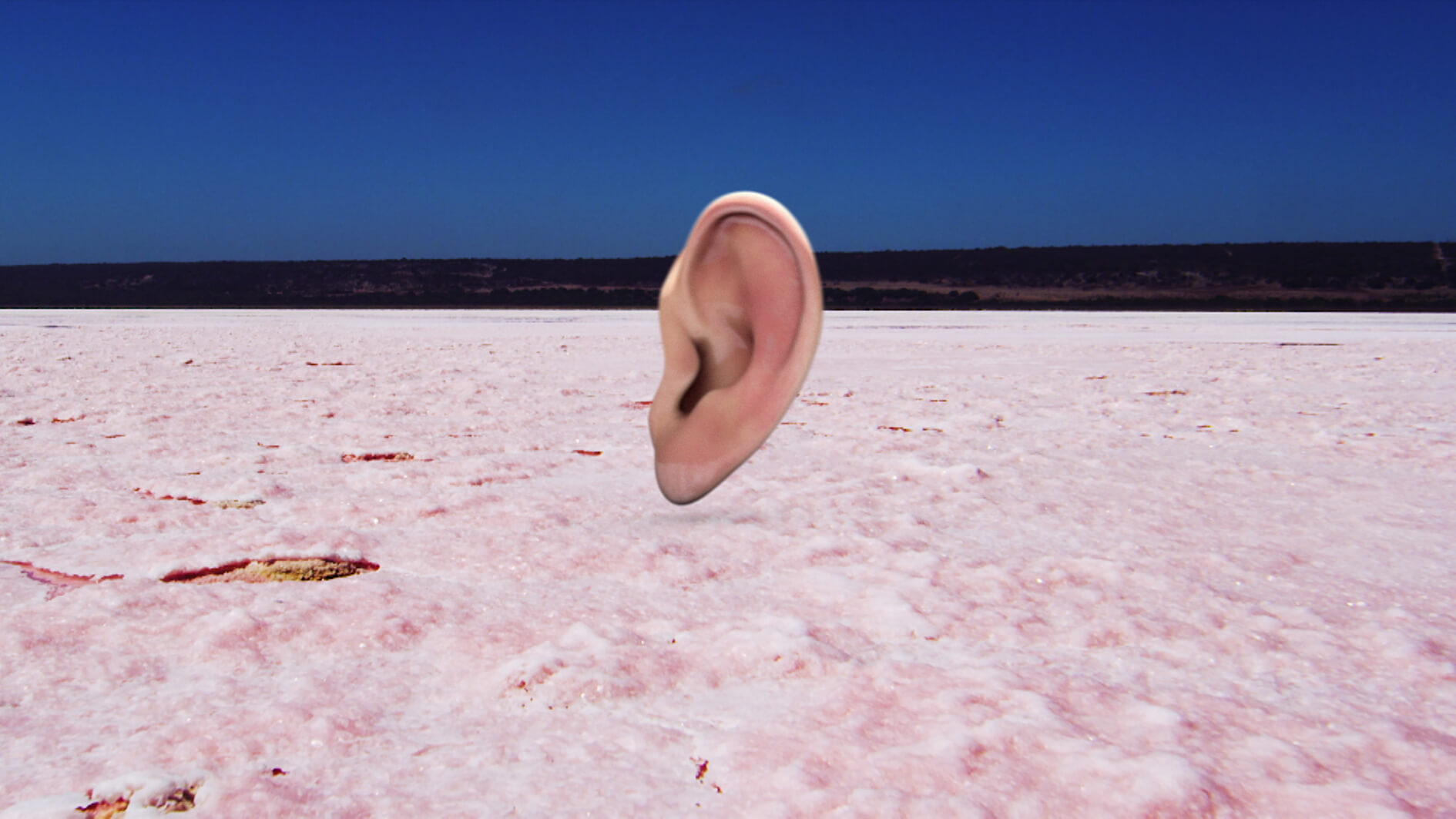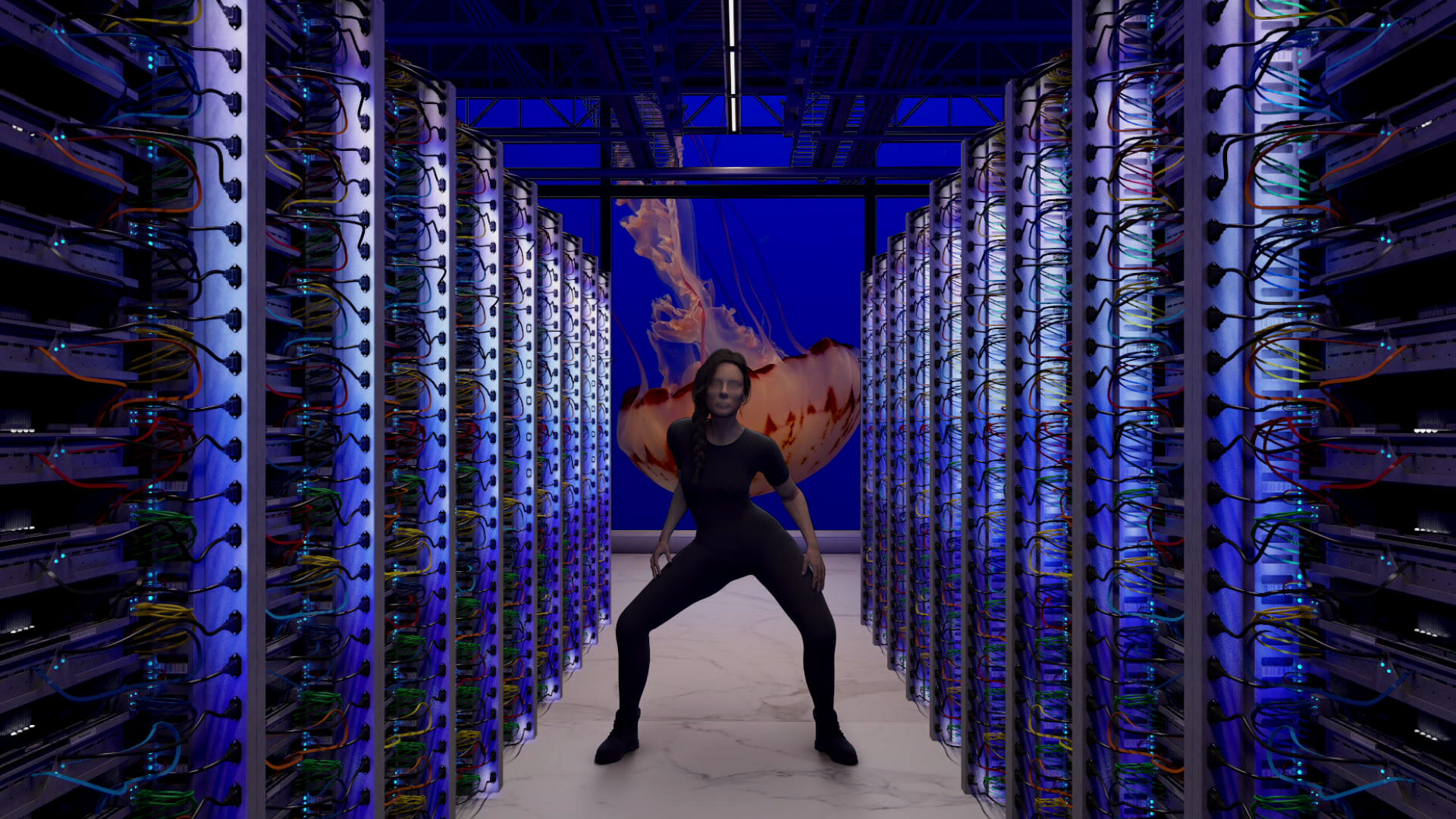SEARCH THE ENTIRE SITE
With Azzedine Saleck, Ana Vaz, Laura Sellies and Amelie Giacomini, Cécile B. Evans, Natália Trejbalová, Josèfa Ntjam
Le Palais de Tokyo proposes an afternoon of projections of 6 differents films as well as a conversation between Josèfa Ntjam and Vittoria Matarrese around the film Dislocations from 6 to 7 pm.
See the details of the program below:
Azzedine Saleck, Dune, 2022
« Above the land
Across the sand
The things I’ve seen
The ways I’ve been »
A conversation between Bah ould Saleck and Mohamedou ould Salahi, respectively the artist’s father and a former Mauritanian detainee who spent 12 years in Guantanamo in the hands of the CIA.
A dialogue between two Mauritanians about the time against the backdrop of images of a loads of sand in the desert, suggests that possibly and despite human efforts the landscape escapes us and cannot be conquered.
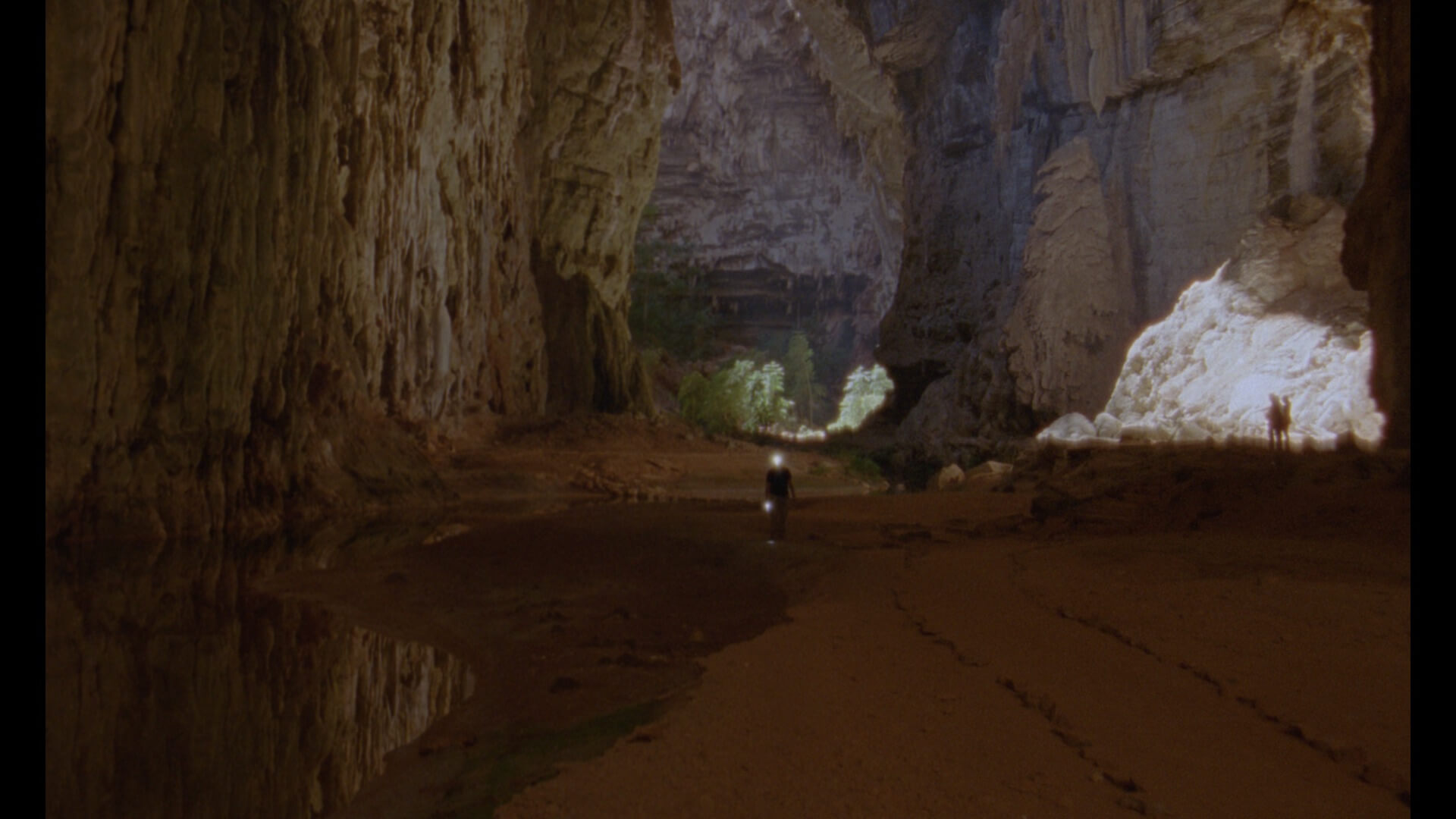
Ana Vaz, Olhe bem as montanhas !, 2018
« Look closely at the mountains! » : the phrase was coined by artist Manfredo de Souzanetto during Brazil’s years of dictatorship. Mining activities were destroying the environment in the state of Minas Gerais in the southwest of the country. Through editing, Ana Vaz draws parallels between this region and the very distant Nord-Pas-de-Calais in northern France, also marked by over three centuries of mining. On one side, eroded mountains plague its inhabitants with deadly landslides. Hollow and gutted, these mountains become the receptacles of a ghostly memory. On the other side, in France, mining waste stacks become mountains and reservoirs of biodiversity, where the threshold between nature and technology becomes indiscernible. The filmmaker surprises us with each shot. Poetry takes precedence over any activist or environmental discourse — as in the sequence showing scientists measuring bats in the moonlight. Here, « look closely » steers the film towards details, towards visual and sound elements. Yet, these are never disconnected from the political: a shot of the sky taken from the bottom of a ravine is enough to conjure up the ghosts of eradicated indigenous peoples, whose cave paintings nonetheless remain.
Laura Sellies et Amelie Giacomini, Toutes ces filles couronnées de langues, 2021
A group of eighty-nine women lives on a volcanic island. Here they undertook to invent a new language, the first stone of a new society. For eighty-nine days, they found and identified gestures and then the shapes that these gestures drew. They inscribed them gradually on the ground, walls, stones, goats, bellies. And the island became an alphabet. In the film Toutes ces filles couronnées de langues, Laura Sellies and Amélie Giacomini pursue a research on language that has been going through their work for several years. This research is determined by the conviction that language is one of the main tools of domination, that our society is shaped by it and that, to deconstruct it. We must think of new modes of exchange. Body and sculpture have always been at the heart of this research. In what way is the movement of the body, linked to the materiality of an object transformed into a partner, capable of inventing a new system of signs? The rudiments of a language that will speak to a few, those who will take the time to decipher it and appropriate it.
Cécile B. Evans, What the Heart Wants, 2016
The work of Belgian-American artist Cécile B. Evans is concerned with the value of emotion in society and its rebellion as it comes into contact with ideological and technological structures. Evans’ video installation What the Heart Wants explores the person-to-machine exchanges that have come to define the contemporary human condition. The video’s hyperlinked narrative takes place after the fall of the internet and follows HYPER, an omnipresent system that has replaced infrastructure and achieved the ultimate goal of “personhood”. Amidst the dizzying paradoxes of a future-turned-now, a negotiation emerges about who or what constitutes a person and how systems shape the terms of what it means to be “human”. Visitors enter a “voided ocean” setting within the installation as HYPER is joined by a range of other protagonists: an immortal cell, a memory from 1972 that has outlived the humans who would have remembered it, a disbanded trio of off-grid lovers, lab children with their robot caregiver, and a workers’ collective comprised entirely of disembodied ears.
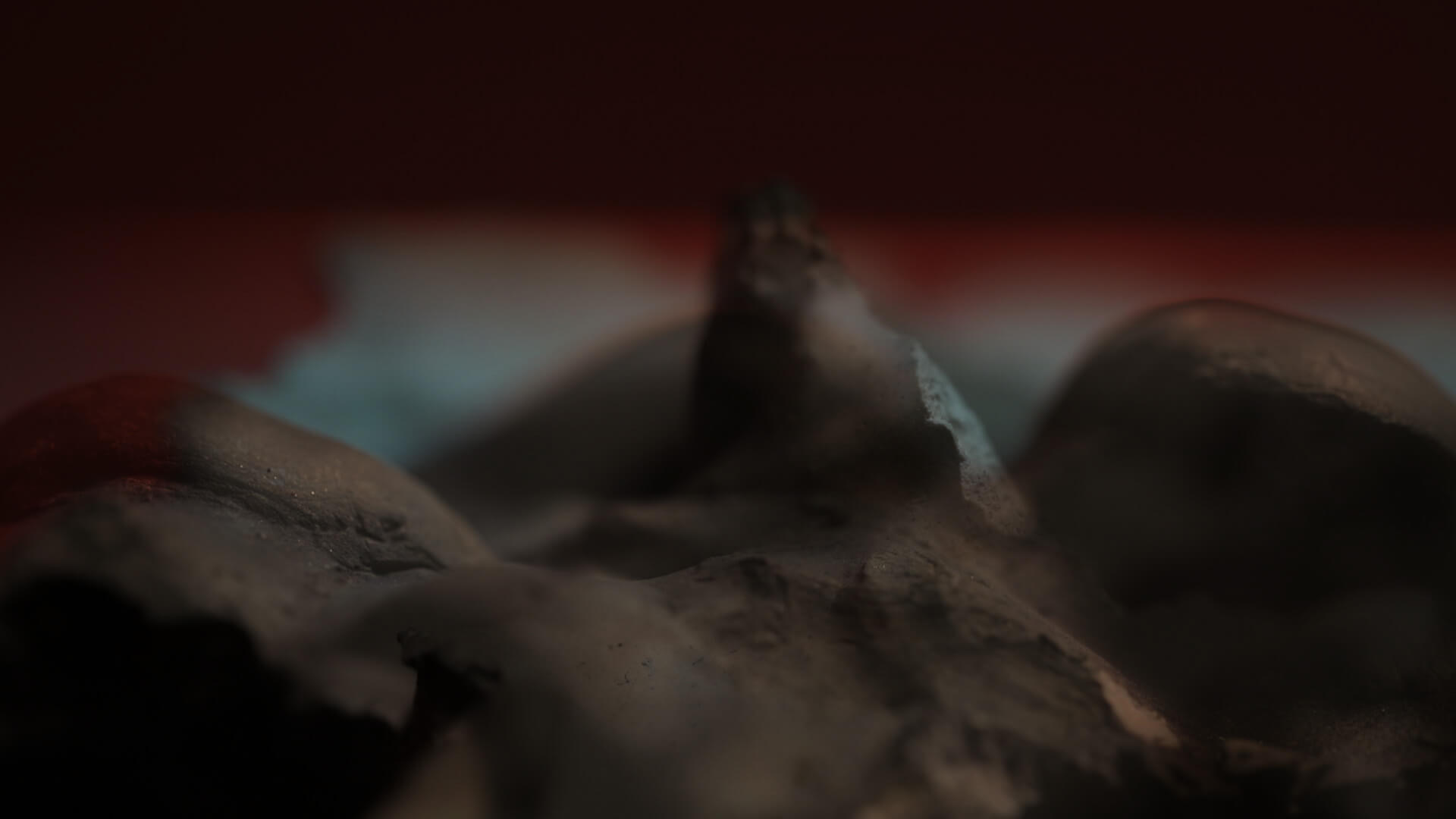
Natália Trejbalová, About Mirages and Stolen Stones, 2020
About Mirages and Stolen Stones is set on a speculative version of our Earth which, for unknown reasons, has suddenly become flat. Our narrator is a scientist who has apparently recorded the film to document this impossible change, 5 years after the flattening. We are immersed in contemplating what happens on the screen by continuously putting in discussion the physicality of the matter and its proportions.
The initial idea for the film arose from the artist’s interest in speculative narrations and popular conspiracy theories, in particular The Flat Earth Theory. This narration can be seen as one of the consequences of changes introduced in the management of information following the spread of the Internet as well as the evolution that has occurred in our relationship with images and with visual representation in general. One of the distinctive features of the film lies in the choice of adopting a subjective perspective of global phenomena, such as the impossible flattening of the Earth’s surface. In other words, it is a question of imagining how we, as individuals, perceive the changes of a much greater extent, which concern our planet as a whole.
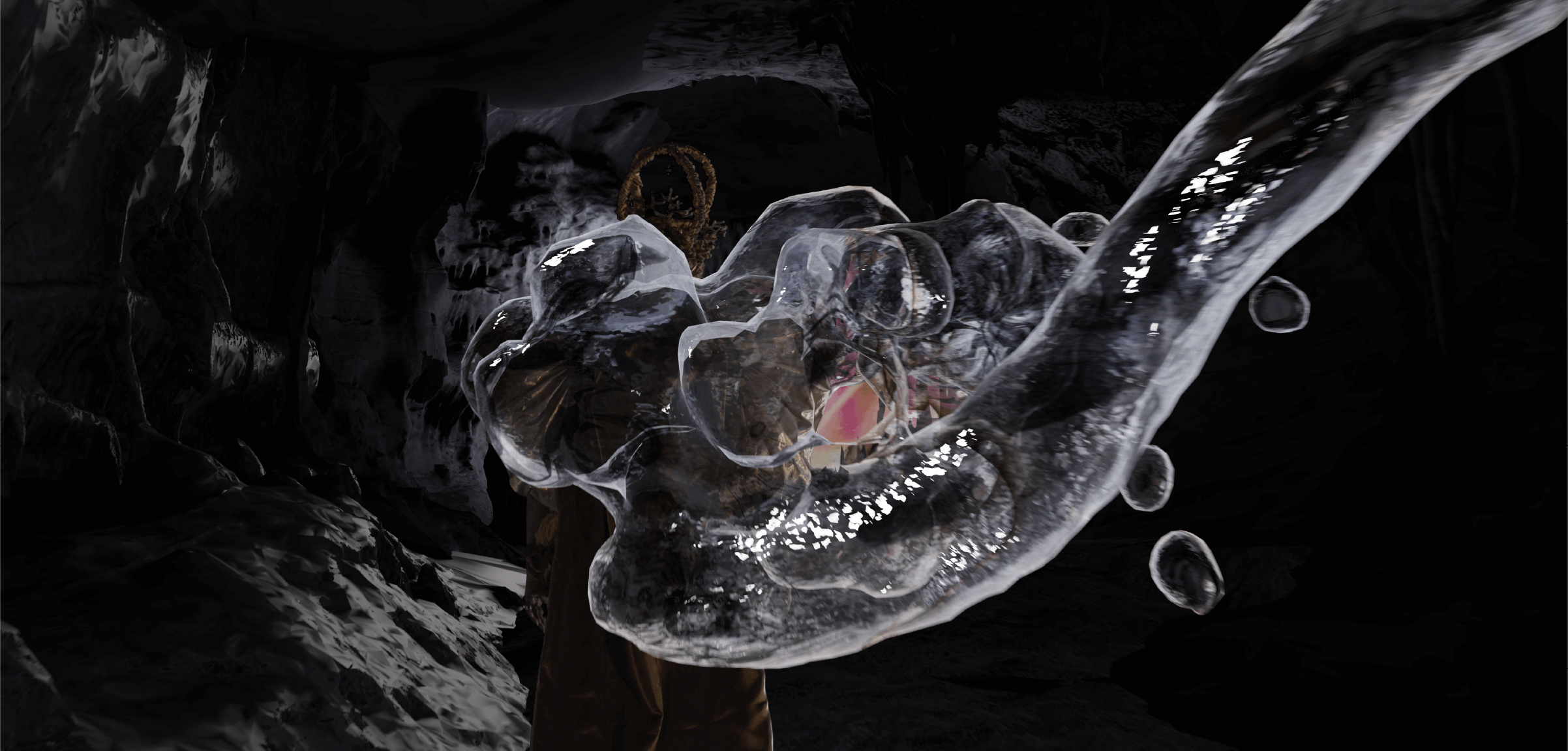
Josèfa Ntjam, Dislocation (first version), 2022
Dislocation is a film directed by Josèfa Ntjam. In this short film we follow Persona, the avatar of Josèfa Ntjam who appears for the second time on the screen. He/she continues his/her initiatory journey from the internet(s) spaces to a cave floating in space among a constellation of shells and fossils resembling asteroids – a rocky and soft cave, both underwater and interstellar.
Persona tries here to find the lost memories of Cameroon’s independence struggles. It is in this floating cave in the space that the artist takes as a metaphor symbolizing the spaces of revolt and dissension that have developed on the margins of the lights. The walls and drips of the cave are a window on archives that eventually merges with Persona, whose humanoid shell has disappeared. They lose their bodies in a puddle that still bears footprints and memories preserved by the water.

